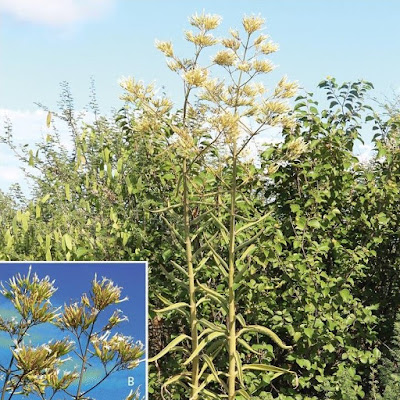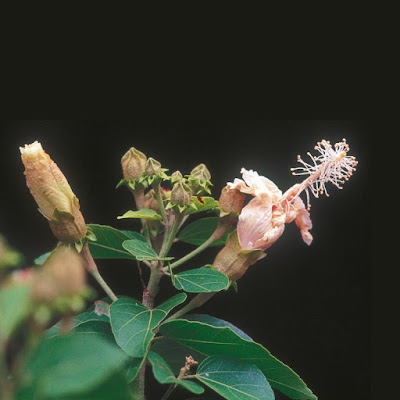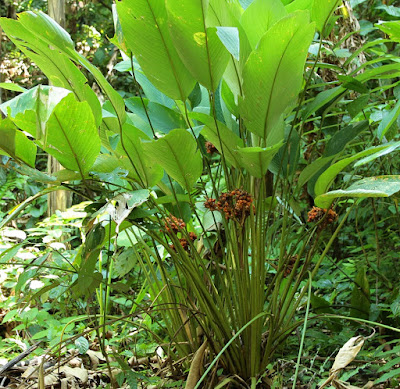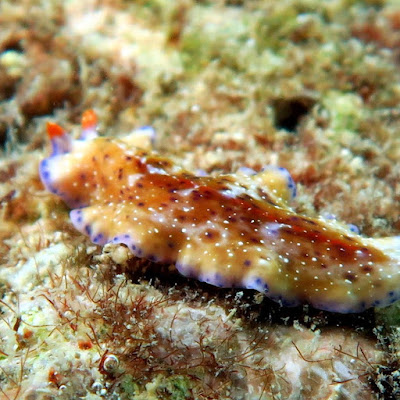[Most Recent Entries] [Calendar View]
Wednesday, May 24th, 2017
| Time | Event | ||
| 12:47a | [Botany • 2017] Kalanchoe hypseloleuce • A New Species (Crassulaceae) from eastern Ethiopia
Summary A new species of Kalanchoe, Kalanchoe hypseloleuce Friis & M. G. Gilbert, was found during field work in Ethiopia in 2015, and is established here. It is characterised by its tall stature (2 – 3 m), entire, sessile, lanceolate leaves and pure white flowers with abaxially minutely papillose corolla lobes (otherwise, the plant is glabrous). It is not obviously related to any previously known species, but an earlier, incomplete specimen has been cited as K. prittwitzii Engl. in the literature. K. hypseloleuce was collected on limestone in Acacia-Commiphora woodland and bushland at c. 1400 m a.s.l. It occurs in the southern part of the eastern Ethiopian escarpment in the Arsi and Eastern Harerghe zones of the Oromo Regional State. K. hypseloleuce is documented with images and maps, its climate envelope has been modelled, and a conservation assessment made. With the current level of threat, this could be Vulnerable to Near Threatened (VU-NT). Given the threat from habitat degradation is not imminent, we recommend the species to be listed as Near Threatened (NT). Key Words: Acacia-Commiphora bushland, Afromontane forest, conservation, limestone, monocarpic, taxonomy, transitional semi-evergreen bushland Kalanchoe hypseloleuce Friis & M. G. Gilbert, sp. nov. ETYMOLOGY. Our new epithet, hypseloleuce, is a compound of two Greek adjectives. The first, ψηλός, ή, όν, ‘high, lofty, (metaphorically) stately’, refers to the impressive height of the plant, it being one of the tallest known species of Kalanchoe in Africa. The second, λευκός, -ή, -όν, ‘light, bright, (of colour) white’, refers to the pure white flowers. The connecting vowel –o– is in agreement with Rec. 60G(a2) of the Code (McNeill et al. 2012). The generic name, Kalanchoe Adans. (Adanson 1763: 248), is said to be an adaptation of a Chinese name for a species in the genus (Harvey 1862) or derived from a Hindi word ‘kalanka’, meaning ‘rust’ or ‘spot’ (Quattrocchi 2000). In botanical literature, Kalanchoe is treated as feminine and, in agreement with Art, 23.5 of the Code, the feminine form of the terminal adjective is used. Ib Friis, Michael G. Gilbert, Paulo van Breugel, Odile Weber and Sebsebe Demissew. 2017. Kalanchoe hypseloleuce (Crassulaceae), A New Species from eastern Ethiopia, with Notes on its Habitat. Kew Bulletin. 72:30. DOI: 10.1007/s12225-017-9704-7 | ||
| 1:29a | [Botany • 2017] Hibiscus contortus | ชบาหุบ • A New Species of Hibiscus (Malvaceae-Malvoideae) from Thailand
ABSTRACT A new species, Hibiscus contortus Phuph. & S.Gardner, is described and contrasted to its nearest ally, H. floccosus Mast. KEYWORDS: Malvaceae-Malvoideae; Hibiscus; new species; conservation; Thailand INTRODUCTION Hibiscus L. comprises approximately 200 species distributed almost worldwide, mostly in the tropics and subtropics, with a few species in temperate regions (Bayer & Kubitzki, 2003). The Thai species of Hibiscus were enumerated by Phuphathanaphong et al. (1989), totalling 17 species (7 exotic species), and recently 19 species (9 exotic species) were recognized by Pooma & Suddee (2014). Further study of Malvaceae-Malvoideae for the Flora of Thailand by the first author found interesting fertile material of Hibiscus from Surat Thani and Songkhla provinces, southern Thailand, which we describe here as Hibiscus contortus Phuph. & S.Gardner. Borssum Waalkes (1966) recognized 9 sections of tribe Hibisceae and this new species belongs to section Azanza. Most species in this section are trees with broad stipules and palminerved leaves. Hibiscus contortus is most similar to Hibiscus floccosus Mast. which occurs in Peninsular Malaysia .... Hibiscus contortus Phuph. & S.Gardner, sp. nov. Allied to Hibiscus floccosus Mast. but differs in leaves not lobed, not scabrous (vs angular or lobed, scabrous); pedicel 2–2.5 cm long, jointed (vs 0.5–1 cm long, without joint); petals pale pink to pale orange with darker pink base (vs yellow to orange with red veins from base); stamen filaments 5–7 mm long (vs 2–2.5 mm long). Type: Thailand, Surat Thani, Don Sak, alt. 5 m, 19 Dec. 2006, Pooma et al. 6460 (holotype BKF; isotypes A, BKF, E, L). Figs. 1–2. Etymology.— The specific epithet ‘contortus’ is derived from Latin, in reference to the overlapped and twisted petals. Vernacular.— Chaba hup (ชบาหุบ). Leena Phuphathanaphong and Simon Gardner. 2017. A New Species of Hibiscus (Malvaceae-Malvoideae) from Thailand. THAI FOREST BULL., BOT. 45(1); 6–9. DOI: 10.20531/tfb.2017.45.1.02 | ||
| 2:03a | [Botany • 2017] Phrynium yunnanense • A New Species (Marantaceae) from Yunnan, China
Abstract Phrynium yunnanense, a new species from Yunnan, China, is described and illustrated. It is closely related to P. hainanense T.L.Wu & S.J.Chen and P. pedunculiferum D.Fang, but it is distinguished by having long peduncle (20–45 cm), bright orange bracts and fruits. A comparison table and the line illustration are presented. Keywords: new species, Phrynium hainanense, Phrynium pedunculiferum, taxonomy, Monocots Phrynium yunnanense Y.S.Ye & L.Fu, sp. nov. Etymology:— The specific epithet refers to Yunnan Province in China. Lin Fu, Yu-Shi Ye and Jing-Ping Liao. 2017. Phrynium yunnanense (Marantaceae), A New Species from Yunnan, China. Phytotaxa. 307(1); 89-94. DOI: 10.11646/phytotaxa.307.1.9 | ||
| 4:04a | [Invertebrate • 2017] Pseudoceros auranticrinis, Pseudoceros vishnui & Prostheceraeus fuscolineatus • Two New Pseudoceros (Polycladida: Pseudocerotidae) and A Prostheceraeus (Polycladida: Euryleptidae) from Andaman and Nicobar Islands, India
Abstract Polyclads are free-living marine flatworms known for their striking colour and patterns. These animals though frequently encountered are still understudied in the Indian context. The present paper describes three new species, two belonging to the genus Pseudoceros Lang, 1884 and one to the genus Prostheceraeus Schmarda, 1859. Pseudoceros auranticrinis sp. nov. is characterised by whitish cream background colour, brown mottling with numerous white and dark brown spots all over the body except margins and a smooth dorsal surface with orange pseudotentacles, Pseudoceros vishnui sp. nov. is characterised by having purple to violet spots on dorsum with margin made up of blue spots, while Prostheceraeus fuscolineatus sp. nov. is characterised by presence of brown longitudinal lines on dorsum and black erected tentacles. This is the first description of any species under the genus Prostheceraeus from central Indo-Pacific as well as Indian Ocean. Some insights on feeding behaviour of P. vishnui sp. nov. are also provided. Keywords: Polyclad, Pseudoceros, Prostheceraeus, new species, taxonomy, Andaman & Nicobar Islands, India, Platyhelminthes Sudhanshu Dixit, C. Raghunathan and Kailash Chandra. 2017. Two New Pseudoceros (Polycladida: Pseudocerotidae) and a Prostheceraeus (Polycladida: Euryleptidae) from Andaman and Nicobar Islands, India. Zootaxa. 4269(4); 495–512. DOI: 10.11646/zootaxa.4269.4.5 |
| << Previous Day |
2017/05/24 [Calendar] |
Next Day >> |











